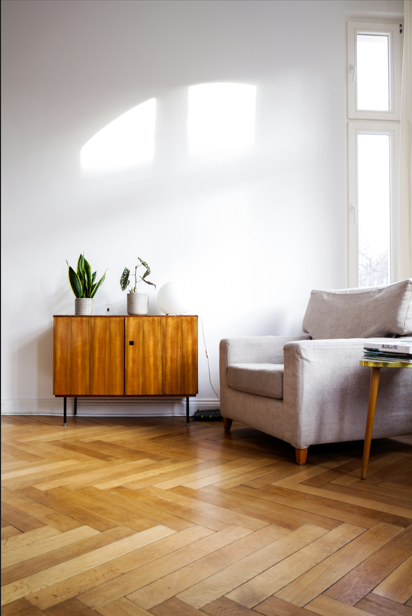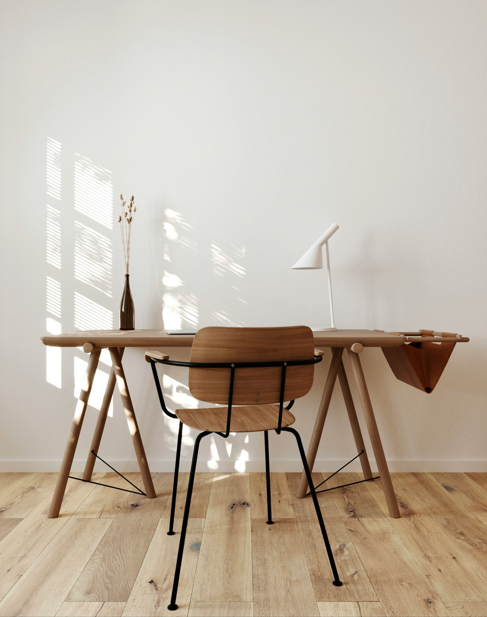
Selecting the right flooring for your home is one of the most important decisions you’ll make during a renovation or new construction project. Flooring does not only impact the beauty of the space, but also has great importance for its durability, comfort maintenance. With all the choices out there, one can get swamped. This guide will enable you to figure out what flooring materials are available, what their strengths and weaknesses are and, in the end, determine which is right for each room in your home.

Understanding Your Flooring Needs
When selecting a type of flooring, it is also worth thinking about your individual requirements and habits. Imagine what each room in your house is for and what qualities are most desirable to you. For example, if you have children or pets, you might want to use a more robust material that can support heavy use from traffic as well as potential messes. Rooms with water exposure (e.g., bathrooms or kitchen) need to be provided with water resistant solutions. Additionally, your budget and how much maintenance you’re willing to commit to should influence your decision.
Types of Flooring
There are numerous flooring options, each with its own advantages and disadvantages. Let’s take a closer look at some of the most popular choices.
Hardwood Flooring
Hardwood floor is a traditional, timeless choice to give homes a sense of nature. It is very sturdy and, if maintained properly, it can really last for decades. A broad range of hardwood species, colours and finishes could be chosen so as to obtain a solution better suited for the appearance style of the house. However, hardwood floors can be expensive, and they are not ideal for rooms with high moisture levels, such as bathrooms and basements, as wood is susceptible to warping and swelling. Hardwood also requires regular maintenance, including cleaning and occasional refinishing, to keep it looking its best. Hardwood works best in living rooms, dining rooms, and bedrooms, where it can be the focal point of the space.
Laminate Flooring
Laminate flooring is a more affordable alternative to hardwood, made from composite wood materials with a photographic layer that mimics the look of wood or stone. It’s easy to install, highly durable, and resistant to scratches, stains, and fading. Laminate is ideal for high-traffic areas due to its sturdiness and ease of maintenance.
On the downside, laminate doesn’t offer the same authentic look and feel as real wood, and once it becomes worn or damaged, it cannot be refinished. It can also be somewhat noisy underfoot, particularly in high-traffic areas. Laminate is a great option for living rooms, bedrooms, and even kitchens, where it can provide the aesthetic of wood without the price tag.
Vinyl Flooring
Vinyl flooring is one of the most flexible of choices. There are many different formats, such as sheets or even tiles and planks, and it can replicate the appearance of natural materials, like wood, stone or ceramic. Vinyl is also water-resistant and is therefore suitable for bathrooms, kitchens, and basements. The main advantage of vinyl flooring is its low cost, convenient installation, and easy maintenance. It is also stain and scratch resistant making it suitable for areas with high pedestrian traffic. However, it may be that certain designs will be less realistic than natural materials, and though vinyl is weather-resistant, it can degrade in the long term, especially where it is in high traffic, i.e. Vinyl is best used in areas where moisture resistance and ease of maintenance are top priorities, such as kitchens, bathrooms, and laundry rooms.
Tile Flooring
Tile is an extremely rigid and water-repellent floor material and thus is suitable for bathrooms, kitchens or entrances. Widely used in various materials, such as ceramic, porcelain, and natural stone, tile provides an infinite design scale. It is also very easy to clean and maintain and its long life span makes it an intelligent buy. But tile can be very cold and hard to walk on and that may not be the best for all rooms, especially in colder climates. The grout that holds the tiles in place also needs cleaning from time to time to avoid discoloring or becoming grimy. Tile installations can be very expensive (and professional assistance is often needed), especially when it involves complex patterns or bigger areas. However, the help of professionals (like https://www.painteradam.co.uk/painters-decorators/leeds) is always good in terms of high quality installation and professional look of your home. Tile is most successful in wet environments such as bathrooms and the kitchen but it is also possible to use it successfully in hallways and mudrooms.
Carpet Flooring
Carpeting is characteristic of its cosiness and warmth, and that is why it is a very common decision for bedrooms and living rooms. The main advantage is it offers a soft cushioning where to trod on, as well as better soundproofing which, suitable for multi-story buildings or sound-sensitive areas. Carpet is a big problem in respect to maintenance that it needs more maintenance than the other flooring types understood in this study. Carpets are prone to staining and need to be frequently cleaned with vacuuming and occasional deep cleaning to maintain a fresh appearance. Moreover, carpet does less well under high load conditions, because it wears down more quickly, and can tend to hold dust, dirt, and allergens. Although challenges exist, carpet is still an excellent option for bedrooms and other areas where warmth and comfort are most important.
Engineered Wood Flooring
Engineered wood combines the attractiveness of hardwood with improved strength. Engineered wood, made from multiple layers of plywood or high-density fiberboard (HDF) covered with a veneer of hardwood, is more resistant to moisture than solid hardwood, so it is suitable in rooms like kitchens or basements which, usually, would warp or buckle. While engineered wood is less expensive than solid hardwood, it is less resilient and cannot be refinished as many times. It also recreates a similar aesthetic as that of hardwood but without as much maintenance. Engineered wood is an excellent solution for rooms such as the living room, kitchen, or bedroom where you desire the appearance of hardwoods, but also need a more practical solution for contemporary daily living.
Choosing the Right Flooring for Specific Rooms
Now that we’ve covered the different types of flooring, it’s time to consider which options are best suited for specific areas of your home. In the living room, comfort and durability are key. Hardwood, engineered wood, laminate, and carpet all make excellent choices. Hardwood or engineered wood can add timeless elegance, while laminate offers a cost-effective alternative. If comfort is a top priority, especially for cold climates, carpet might be your best bet.
The floor covering in the kitchen is required to be strong and stain resistant to spills. Vinyl, tile, and engineered wood are all strong contenders. Tile is a particularly practical option due to its resistance to water, while vinyl offers affordability and ease of maintenance. Engineered wood, although less able to withstand moisture, can still be incorporated for the kitchen if it is a good installation. Moisture resistance is a must-have in the bathroom. Tile and vinyl floor are suitable in this environment, providing water resistance and cleanability. Engineered wood can be used also in bathrooms but it is a must to select a very high-quality one product formulated for wet conditions.
In the bedroom, comfort is paramount. Carpet provides a comfortable, cozy surface to step on, and is suitable for this area. Nevertheless, hardwood or engineered timber can also upscale the look, particularly when you desire a low-maintenance floor that works with any design. Durability and ease of maintenance also are critical in hallways and entries. Tile, laminate, and hardwood are all good choices for these areas of high traffic. Tile’s durability towards dirt and humidity allows it to be a reasonable option, whereas hardwood and laminate offer a tasteful and sturdy appeal.

Conclusion
Choosing the right flooring for your home is a decision that requires careful thought and consideration. Knowing the features of each of the types of floorings, and also figuring out the particular needs of each room, allows you to develop a reasonable decision that can result in the improvement of the functionality and aesthetics of your home. From the classic quality of hardwood, to the cost effectiveness of laminate, to the moisture resistance of vinyl and tile, there’s the ideal floor for every room in your house.
